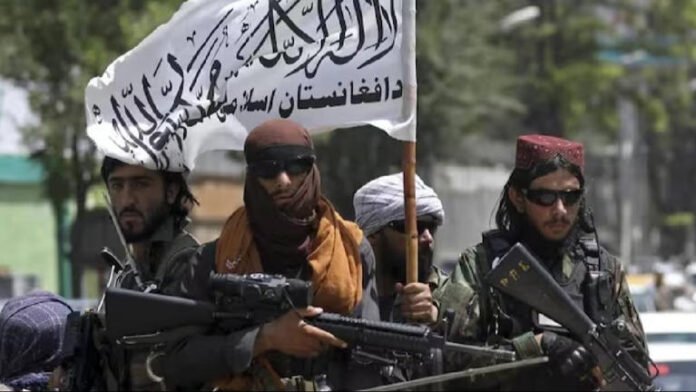Escalating tensions between the Taliban and Pakistan have resulted in a major military confrontation. On the heels of a reported mobilization of 15,000 Taliban fighters, the situation has sparked intense debates and concerns about the future of regional stability. But why is the Taliban, the once-reclusive group that overthrew the Afghan government in 2021, suddenly taking a more aggressive stance toward Pakistan? To understand this, we need to look into the historical, political, and security dynamics shaping this bold move.
Historical Context: A Complex Relationship
The Taliban’s relationship with Pakistan has always been complex and multifaceted. Pakistan has been both a patron and a perceived adversary in the eyes of the Taliban. Throughout the years of the Taliban’s insurgency in Afghanistan, Pakistan, particularly its powerful military establishment, supported the group with safe havens and logistical assistance. This was seen as a way to maintain influence over Afghanistan and counter Indian influence in the region. However, the relationship between the two has soured, particularly after the Taliban’s takeover of Afghanistan in 2021.
Pakistan, which has long struggled with its own insurgency issues—especially in regions like Balochistan and the tribal areas—has found itself at odds with the Taliban’s growing control over Afghanistan. The Taliban’s increasing influence in Afghanistan has emboldened militant groups operating along the Pakistan-Afghanistan border, which has become a flashpoint for cross-border violence. Pakistan has faced a surge in attacks from these groups, leading to accusations that the Taliban is not doing enough to curb the violence.
The Root of the Conflict: Cross-Border Militancy
One of the primary factors driving the Taliban’s move against Pakistan is the rising wave of cross-border militancy. Since the Taliban’s rise to power, various insurgent groups, including the Pakistani Taliban (Tehrik-i-Taliban Pakistan, or TTP), have found refuge in Afghanistan. These groups, with a shared ideology, have used Afghanistan’s border regions as a base to launch attacks against Pakistani security forces.
For years, Pakistan has pressured the Taliban to clamp down on the TTP, but the Taliban has been unwilling or unable to take significant action. The TTP, which seeks to impose a strict interpretation of Islamic law in Pakistan, has become increasingly bold, carrying out deadly attacks across Pakistan’s northwestern regions. The Afghan Taliban, on the other hand, has claimed that it cannot simply eradicate these groups because of their shared ethnic and ideological ties.
This lack of cooperation has angered Pakistan, leading to military operations along the Afghan border. The recent mobilization of 15,000 Taliban fighters is seen as a warning to Pakistan—an effort to assert their authority and challenge Pakistani attempts to interfere in Afghan affairs. The Taliban’s message is clear: Afghanistan’s sovereignty will not be compromised by foreign pressure, and they will defend their interests.
Internal and External Pressures
Internally, the Taliban is facing mounting challenges in governance. Afghanistan’s economy remains in dire straits, with international aid largely suspended, leaving the Taliban struggling to manage the country’s vast humanitarian needs. The group has also faced criticism for its treatment of women, human rights abuses, and its failure to create a more inclusive government. Facing significant domestic challenges, the Taliban may be seeking to bolster its legitimacy by appearing strong and defiant in the face of external threats, particularly from Pakistan.
Externally, the Taliban is looking to reinforce its influence in the region. The United States’ withdrawal from Afghanistan left a power vacuum, and regional powers like China, Russia, and Iran have moved in to fill that gap. Pakistan, which has traditionally seen itself as the gatekeeper of Afghanistan’s stability, is no longer the uncontested regional player it once was. The Taliban’s actions could be interpreted as a bid to assert greater autonomy in their dealings with neighboring countries, including Pakistan.
The Strategic Importance of Balochistan
A significant part of this conflict revolves around the region of Balochistan, which spans both Afghanistan and Pakistan. This region has long been a hotbed of insurgency, with both Afghan and Pakistani Baloch separatists seeking independence from their respective governments. The Taliban, in asserting its control over Afghanistan, may also be looking to curtail the activities of Baloch insurgent groups, who operate with relative freedom along the porous border.
Balochistan has become a major strategic asset for both Afghanistan and Pakistan. For the Taliban, controlling this region and its border areas is critical for asserting territorial integrity and preventing destabilization. For Pakistan, securing Balochistan and curbing the Baloch separatist movement is crucial to maintaining national unity and preventing the region from becoming a flashpoint for further insurgency.
Conclusion: What’s Next for the Region?
The confrontation between the Taliban and Pakistan is a complex and evolving situation, with deep-rooted historical, political, and security factors at play. The Taliban’s mobilization of 15,000 fighters signals a shift in the regional power balance and could be a harbinger of further escalation. As the Taliban continues to assert itself on the world stage, it will likely face increasing pressure from both its neighbors and the international community to ensure that its territory does not become a breeding ground for insurgency and extremism.
For Pakistan, dealing with the Taliban’s defiance will require a recalibration of its strategy in Afghanistan—one that balances military action with diplomatic engagement. The future of the region will depend on whether the Taliban can stabilize Afghanistan internally and whether Pakistan can address the security concerns that continue to plague its border areas. The situation remains fluid, and much will depend on the decisions both sides make in the coming months.

